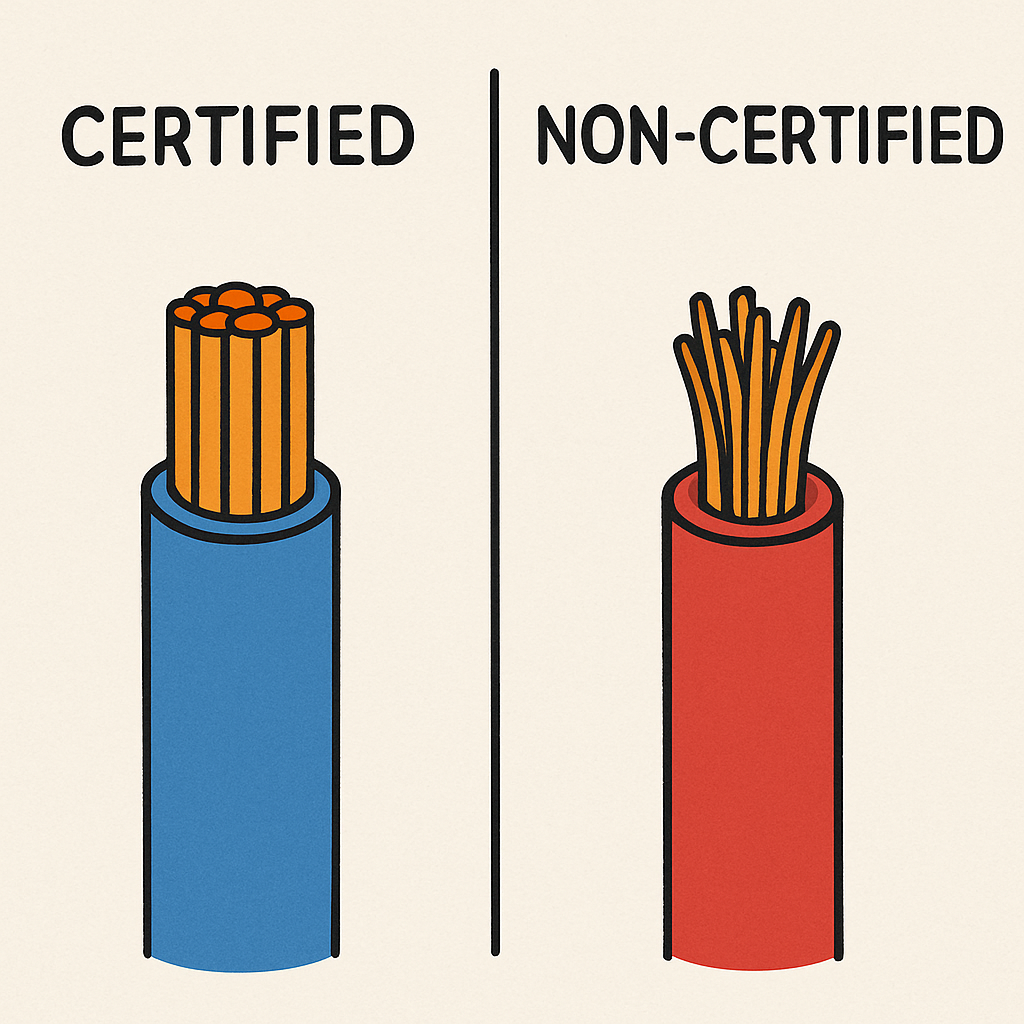Main Products / Services/ Breaking News
English
English
Mon-Fri: 9:00 a.m. to 6:30 p.m.
In the dazzling world of lighting, LED strip lights have become a popular choice for both homeowners and businesses. They offer flexibility, efficiency, and an array of colors that can transform any space into something extraordinary. However, the success of an LED strip lighting project often hinges on the quality of its components, particularly the connectors and the wires used. This article will explore why using certified wires with adequate copper thickness is crucial for flex LED strip connectors, and why substandard, non-certified conductors can lead to potential problems.
Flex LED strip connectors are small but mighty components that play a critical role in the functionality of your LED strip lights. They act as the bridge between the power source and the LED strip, ensuring that electricity flows smoothly and efficiently. Without reliable connectors, even the best LED strip lights can falter, leading to flickering, dimming, or complete failure.
Wires are the veins of your LED strip lighting system, carrying the lifeblood of electricity to power the lights. The quality of these wires is paramount to the performance and longevity of the lighting setup. Certified wires with adequate copper thickness ensure that the electrical current is transmitted safely and efficiently.
 Certified Wires: The Gold Standard
Certified Wires: The Gold StandardCertified wires are tested and approved by recognized standards organizations, guaranteeing their safety and performance. These wires are made with high-quality materials, including copper with adequate thickness, which provides excellent conductivity and durability. This results in stable and efficient performance, minimizing the risk of overheating and electrical failures.
Certified wires also tend to have additional protective features such as insulation that resists wear and tear, further extending their lifespan and reliability. These features make them the preferred choice for anyone serious about maintaining a high-quality LED strip lighting system.
In contrast, substandard non-certified conductors often cut corners to reduce costs, sacrificing quality and safety. These wires may contain less copper or use inferior materials, leading to poor conductivity and increased resistance. This can cause the wires to overheat, potentially resulting in damage to the LED strips or even creating a fire hazard.
Additionally, non-certified wires often lack adequate insulation, making them susceptible to environmental factors like moisture and physical damage. This can lead to short circuits, further compromising the performance and safety of your LED strip lighting system.
Copper is the preferred material for electrical wires due to its excellent conductivity and flexibility. However, the thickness of the copper used in the wires is equally important. Adequate copper thickness ensures that the wire can handle the electrical load without overheating or losing efficiency.
Wires with adequate copper thickness provide lower resistance, allowing electricity to flow more freely. This results in brighter and more consistent lighting, as the LED strips receive the power they need to perform optimally. On the other hand, wires with insufficient copper thickness can cause voltage drops, leading to dimmer lights and reduced performance.
Thicker copper wires also enhance safety by reducing the likelihood of overheating. Overheating can damage the LED strips and connectors, and in extreme cases, it can pose a fire risk. Certified wires with adequate copper thickness are designed to handle the demands of LED strip lighting safely, giving you peace of mind.
To ensure you’re using certified wires, look for markings or labels that indicate compliance with industry standards. Common certifications include UL (Underwriters Laboratories), CSA (Canadian Standards Association), and IEC (International Electrotechnical Commission). These certifications signify that the wires have passed rigorous testing and meet the necessary safety and performance criteria.
Additionally, certified wires often come with documentation or packaging that details their specifications, including copper thickness. This information can be invaluable when planning your LED strip lighting project, as it allows you to choose wires that are suitable for your specific needs.
Using certified wires with adequate copper thickness ensures that your LED strip lighting system performs at its best. The wires provide stable and efficient electricity flow, reducing the risk of flickering or dimming. This not only enhances the visual appeal of your space but also extends the lifespan of your LED strips and connectors.
Safety is a top priority for any electrical installation, and LED strip lighting is no exception. Certified wires offer superior insulation and durability, reducing the risk of electrical failures and fire hazards. By choosing certified wires, you can enjoy your LED strip lights with confidence, knowing that they are backed by reliable, high-quality components.
While certified wires may have a higher upfront cost compared to substandard non-certified conductors, they offer greater value in the long run. Their durability and performance reduce the need for frequent replacements and repairs, saving you money over time. Additionally, the peace of mind that comes with using safe, reliable components is priceless.
When it comes to flex LED strip connectors, the choice of wires is a critical factor that can determine the success of your lighting project. Certified wires with adequate copper thickness provide the performance, safety, and reliability needed to ensure your LED strip lights shine bright and last long. Avoid the pitfalls of substandard non-certified conductors and invest in quality components to enjoy the full potential of your LED strip lighting system. Remember, the quality of your connectors and wires is the foundation of a stunning and dependable lighting setup.